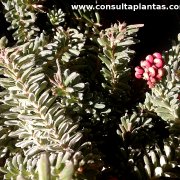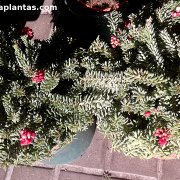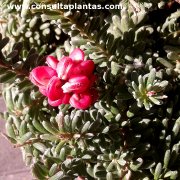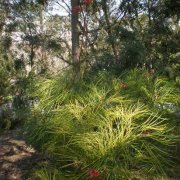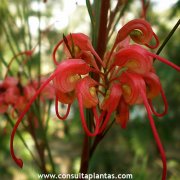Care of the shrub Grevillea lanigera or Wooly Grevillea |
|
The genus Grevillea, family Proteaceae, comprises 400-500 species of shrubs and trees native to Australia and Papua New Guinea. Some species are: Grevillea lanigera, Grevillea juniperina, Grevillea johnsonii, Grevillea Golden Yu-Lo, Grevillea Clearview David, Grevillea brachystachya, Grevillea robusta, Grevillea alpina, Grevillea rosmarinifolia, Grevillea sulphurea, Grevillea thyrsoides, Grevillea crithmifolia, Grevillea olivacea. Common name: Wooly Grevillea. This species is native to New South Wales and Victoria, Australia. They are evergreen shrubs with a creeping bearing (horizontal growth) that reach 1 meter (3.28 feet) in height. The Grevillea lanigera variety Mount Tamboritha reaches 40 cm (15.74") in height. The branches and leaves, deep green in color, are hairy. The curious and attractive red flowers can bloom all year round especially in winter and spring. These slow-growing shrubs are used in rockeries, borders, shrub groups, and in pots and planters. Grevillea lanigera can be grown in full sun or semi-shade exposures. It resists very well the heat of the Mediterranean summer and sporadic frosts down to -6 ºC (21.2 ºF). Wooly Grevillea prefers a light garden soil, with coarse sand and a little compost. Drainage must be perfect because it's sensitive to the accumulation of water in the roots. It's important to water moderately, always waiting for the substrate to be dry; reduce watering in winter. Grevillea lanigera does not need fertilizers. Prune lightly in fall to maintain a compact appearance. Wooly Grevillea is a plant resistant to the usual pests but sensitive to excess humidity. Grevillea lanigera propagates by cuttings but it's easier to do it by seeds. |
Images of the shrub Grevillea lanigera or Wooly Grevillea |
Find plants
Grevillea lanigera or Wooly Grevillea | Care and Growing
© 2026 FavThemes
